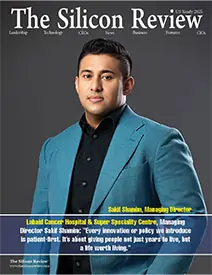>>
Industry>>
Healthcare>>
What You Need to Know About Au...What You Need to Know About Autonomous Coding In Healthcare
The Silicon Review
05 December, 2023
Organizations are swiftly embracing autonomous coding, an innovative approach driven by artificial intelligence (AI), to alleviate the administrative burdens and pitfalls associated with manual coding in healthcare.
This transformative strategy not only promises increased efficiency but also aims to reduce rejections, omitted charges, and low-risk scores, enabling healthcare providers to make critical decisions more quickly. In this article, let’s explore everything you need to know about autonomous medical coding.
What is Manual Medical Coding?
Before delving into autonomous coding, it's essential to know the traditional manual medical coding procedures. In this process, a human coder meticulously reviews 100% of claims using coding software, manually assigning a five-digit code to each claim.
Subsequently, the coded information is entered into the Electronic Health Record and forwarded to the insurance company. The entire cycle, from coding to reimbursement, spans five to seven days.
What is Autonomous Medical Coding?
The paradigm shifts with autonomous medical coding, commencing with automated data transmission from clinical practice to AI software. In this streamlined approach, 95% of claims are autonomously coded by artificial intelligence, eliminating the need for human intervention.
These coded claims are then promptly sent to the payer for billing. The remaining 5% of claims, decipherable only by human coders, are handled by independent coding vendors or practices. Denials are infrequent, and in rare occurrences, the AI swiftly records and reanalyzes the data, concluding the entire process in less than a day.
Advantages of Autonomous Medical Coding
The integration of autonomous medical coding solutions provides numerous advantages for healthcare providers such as:
- Enhanced billing and accuracy: The efficiency and accuracy of insurance claim submissions receive a significant boost, ensuring a swifter claim submission and reimbursement process. This translates to considerable time savings for both concerned patients and hospitals.
- Reduced error rates: Automated coding solutions like Medimobile Medical Billing Software, supported by Machine Learning and AI integration, contribute to a reduction in error rates. The consequence is a decrease in rejected claims, fostering a more streamlined and error-resistant coding process.
- Adherence to coding standards: Autonomous coding ensures improved adherence to coding standards and regulations, paving the way for more efficient auditing procedures. This compliance is instrumental in maintaining the integrity and accuracy of healthcare records.
Manual vs. Autonomous Coding
The primary distinction between the two types is the time-to-code, with autonomous coding, completing the coding and submission of claims in less than 24 hours. In stark contrast, manual coding lingers in the realm of five to seven days.
Beyond speed, autonomous coding boasts a superior accuracy that results in a notable reduction in denial rates, averaging around 30%. Furthermore, the autonomous system excels in automatically recognizing and coding claims that are rejected by payers, ensuring that a significant portion of claims that would otherwise go unbilled are now appropriately coded, leading to potential revenue increases.
Economically, autonomous medical coding introduces a more flexible and cost-effective structure. Providers are charged a flat cost-per-claim, eliminating the need for a constant workforce, as seen in traditional manual coding models. This flexibility ensures that costs align with income fluctuations, avoiding unnecessary spending during periods of low patient volume and streamlining scalability during volume spikes.
Endnote
Autonomous coding emerges as a transformative force in healthcare operations, promising efficiency, accuracy, and economic viability. By embracing this innovative approach, healthcare providers can streamline their coding processes, improve financial outcomes, and heighten resilience in the face of evolving patient demands.


 (1)_2025-10-21_13-35-14.webp)

_2025-10-02_10-21-48.webp)

